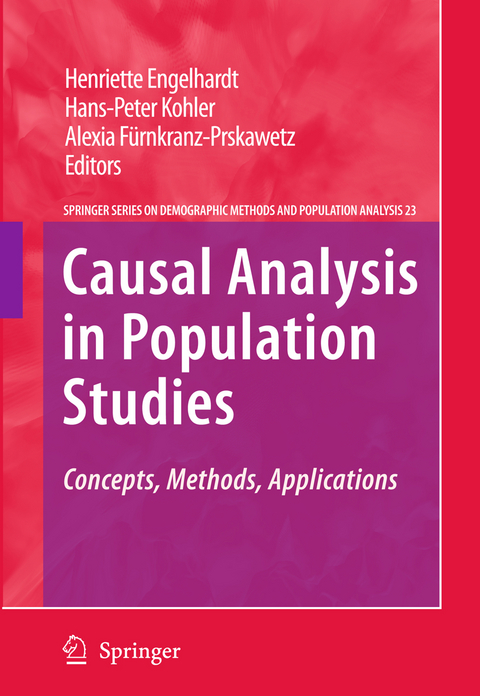
Causal Analysis in Population Studies
Springer (Verlag)
978-90-481-8232-9 (ISBN)
The central aim of many studies in population research and demography is to explain cause-effect relationships among variables or events. For decades, population scientists have concentrated their efforts on estimating the ‘causes of effects’ by applying standard cross-sectional and dynamic regression techniques, with regression coefficients routinely being understood as estimates of causal effects. The standard approach to infer the ‘effects of causes’ in natural sciences and in psychology is to conduct randomized experiments. In population studies, experimental designs are generally infeasible.
In population studies, most research is based on non-experimental designs (observational or survey designs) and rarely on quasi experiments or natural experiments. Using non-experimental designs to infer causal relationships—i.e. relationships that can ultimately inform policies or interventions—is a complex undertaking. Specifically, treatment effects can be inferred from non-experimental data with a counterfactual approach. In this counterfactual perspective, causal effects are defined as the difference between the potential outcome irrespective of whether or not an individual had received a certain treatment (or experienced a certain cause). The counterfactual approach to estimate effects of causes from quasi-experimental data or from observational studies was first proposed by Rubin in 1974 and further developed by James Heckman and others.
This book presents both theoretical contributions and empirical applications of the counterfactual approach to causal inference.
Causal Analysis in Population Studies.- Issues in the Estimation of Causal Effects in Population Research, with an Application to the Effects of Teenage Childbearing.- Sequential Potential Outcome Models to Analyze the Effects of Fertility on Labor Market Outcomes.- Structural Modelling, Exogeneity, and Causality.- Causation as a Generative Process. The Elaboration of an Idea for the Social Sciences and an Application to an Analysis of an Interdependent Dynamic Social System.- Instrumental Variable Estimation for Duration Data.- Female Labour Participation with Concurrent Demographic Processes: An Estimation for Italy.- New Estimates on the Effect of Parental Separation on Child Health.- Assessing the Causal Effect of Childbearing on Household Income in Albania.- Causation and Its Discontents.
| Reihe/Serie | The Springer Series on Demographic Methods and Population Analysis ; 23 |
|---|---|
| Zusatzinfo | VIII, 252 p. |
| Verlagsort | Dordrecht |
| Sprache | englisch |
| Maße | 155 x 235 mm |
| Themenwelt | Sozialwissenschaften ► Soziologie ► Empirische Sozialforschung |
| Sozialwissenschaften ► Soziologie ► Spezielle Soziologien | |
| Wirtschaft ► Volkswirtschaftslehre ► Wirtschaftspolitik | |
| ISBN-10 | 90-481-8232-8 / 9048182328 |
| ISBN-13 | 978-90-481-8232-9 / 9789048182329 |
| Zustand | Neuware |
| Haben Sie eine Frage zum Produkt? |
aus dem Bereich


